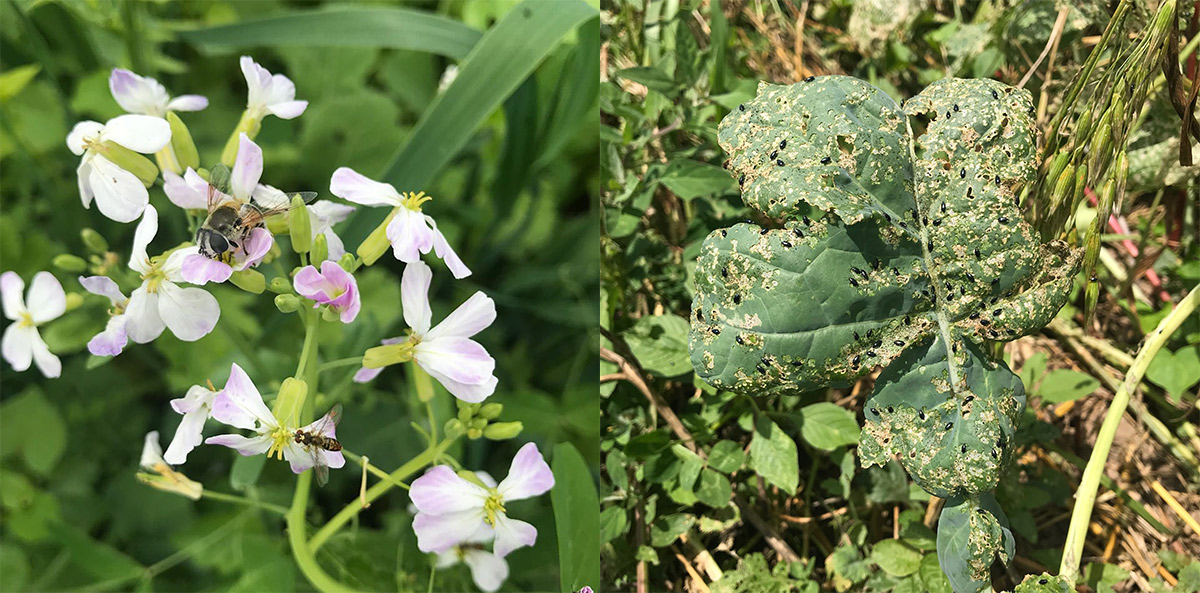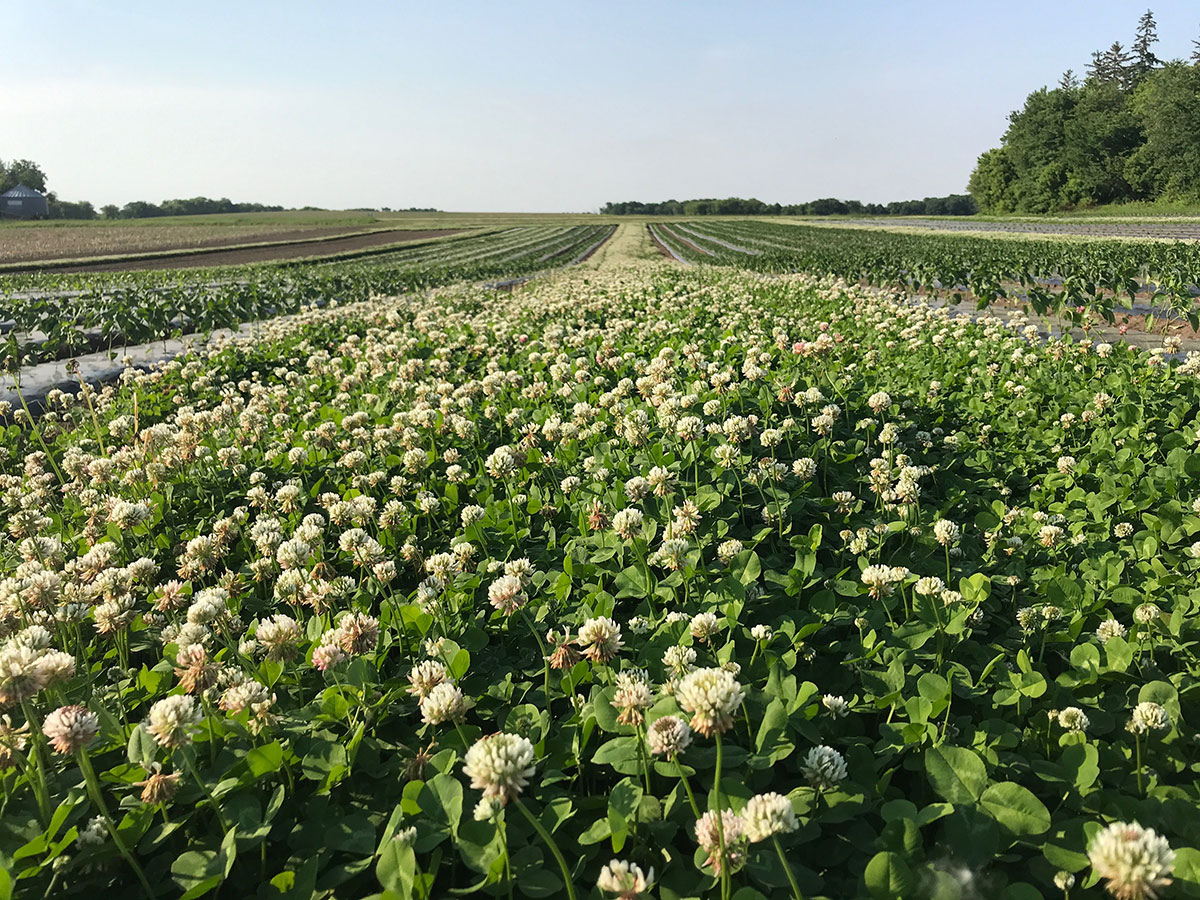Diversified vegetable farming is complicated. Growers manage complex crop rotations, often including dozens of crops from ten or more different plant families, each with its own fertility needs, planting, and harvest times. They also routinely use many kinds of cover crops to prevent soil erosion, suppress weeds, and improve soil health in short windows between successions of vegetables. Add in the challenge of attracting pollinators and beneficial insects to increase their crop yields, and it’s a lot to keep track of.
To help farmers navigate such complex systems, the Xerces Society has partnered with the Grossman Lab from the University of Minnesota (UMN) to develop a new publication, Pollinator-Friendly Cover Cropping for Vegetable Producers in the Upper Midwest, which was funded by North Central SARE.

The benefits of flowering cover crops
Flowering cover crops like buckwheat and clovers can provide abundant shelter, pollen and nectar resources. This helps both pollinators like bees, but also other insects important for natural pest control, such as parasitoid and predaceous wasps, hoverflies, and beetles. Research by Xerces and UMN found that flowering cover crops – notably buckwheat, phacelia, and sunflowers – attract substantially more beneficial insects than weedy fallow fields.
To maximize these benefits, farmers should plant flowering cover crops in windows that will allow the floral resources to be available for beneficial insects, but then terminate the cover before it sets too many seeds – and, ideally, in a way that doesn’t disturb ground-nesting pollinators.
This new publication offers a comprehensive table that outlines which cover crops have high pollinator value, and also provides those key management details such as when to plant and terminate each cover crop to optimize the balance of production and conservation objectives.

The pros and cons of cover crop mixes
Using more than one species in your cover crop blend can offer upsides and downsides. On the positive side, a mix can diversify the insects you attract, offer better soil improvements, be more resilient to environmental conditions, and offer successional blooms from a single planting. For the cons, mixes can be harder to design and predict, manage weed seed production, or could require multiple seeding techniques to get diverse seed sizes planted at appropriate soil depths.
Our cover crop guide provides a list of principles that will help vegetable growers find a mix that achieves multiple conservation and production goals. We suggest three sample mixes - each designed for unique contexts - and provide the seeding rate specifications. Since every operation is unique, vegetable growers should view these mixes as a starting point that can be adjusted as your needs and goals evolve.
For maximum benefit, farms should add perennial habitat, too
When it comes to native pollinator conservation, flowering cover crops are a habitat supplement, not the whole story. Flowering cover crops provide important food resources for generalist pollinators, but many pollinators are specialists, having very narrow habitat requirements tied to native vegetation. The role of temporary, mass-blooming species in vegetable production fields is anything but trivial, but to fully support pollinators and attract beneficial insects, we recommend incorporating diverse, perennial native habitat that provides permanent forage and nesting habitat in and around crop production fields. All on-farm habitat should also include protection from pesticides to fully realize conservation goals.





